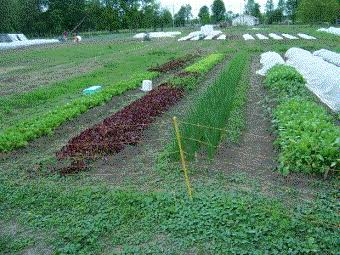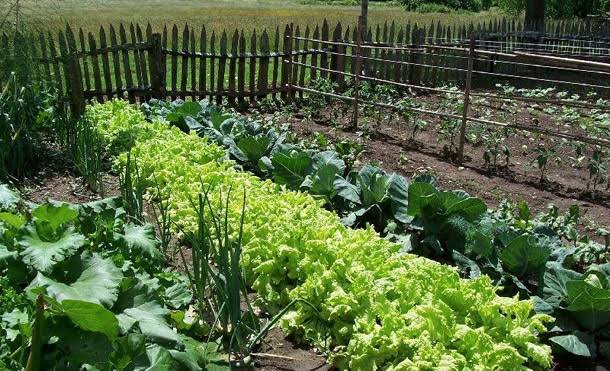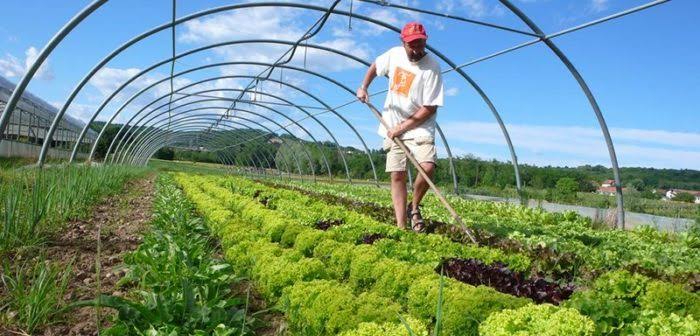Micro Farming: Comprehensive Guide and Benefits
In recent years, there has been a growing interest in micro farming as a means of sustainable agriculture. Micro farming is the practice of growing food and other crops on a small scale, often in urban or suburban settings.
Micro farmers typically use intensive growing techniques, such as vertical farming or hydroponics, to maximize the use of space and resources.
One of the benefits of micro farming is that it can provide fresh, locally grown produce to communities that might not have access to it otherwise.
Many micro farmers sell their crops at farmers’ markets or through community-supported agriculture (CSA) programs, which allow people to buy a share of the farmer’s harvest in advance.
Micro farming also has the potential to be more environmentally sustainable than traditional farming methods. By growing crops in urban areas, micro farmers can reduce the carbon emissions associated with transporting food from rural areas to cities.
Additionally, many micro farmers use organic growing practices, which can help reduce the use of harmful pesticides and fertilizers.
Another advantage of micro farming is that it can provide a source of income for people who might not have access to traditional employment opportunities.
Micro farming can be done on a small scale and with relatively low start-up costs, making it accessible to people from a variety of backgrounds.
Read Also: Climate Change and Remediation Meteorology
This is especially true in developing countries, where micro farming has been used as a means of poverty reduction.
Despite the benefits of micro farming, there are also some challenges associated with it. One of the biggest challenges is that it can be difficult to make a living solely from micro farming, especially in areas where the cost of living is high.
Additionally, micro farmers may face zoning restrictions or other regulatory hurdles that can make it difficult to get started.
Despite these challenges, micro farming has the potential to play an important role in sustainable agriculture and community development.
By providing fresh, locally grown produce, micro farmers can help improve food security and access to healthy foods.
Additionally, micro farming can provide a source of income and employment for people who might not have access to traditional job opportunities.
There are many examples of micro farming initiatives around the world that have been successful in improving the lives of individuals and communities.
In Cuba, for example, the government has promoted urban agriculture as a means of reducing dependence on imported food and improving food security.
Read Also: How To Build A Successful Marketing Agency From Scratch
In India, micro farming has been used as a means of empowering women and promoting gender equality.
Benefits of Micro Farming

Micro farming is a rapidly growing trend in agriculture that involves the cultivation of crops and plants on a small scale.
With the rise of urbanization and the increasing demand for locally grown produce, micro farming is becoming an attractive option for people who want to grow their own food and support sustainable agriculture.
There are many benefits to micro farming, including:
(1) Health benefits
Micro farming allows you to grow your own organic fruits and vegetables, which are free from harmful pesticides and chemicals.
This means that you can have access to fresh and healthy produce all year round, without having to worry about the quality and safety of the food you eat.
(2) Cost savings
By growing your own produce, you can save a significant amount of money on your grocery bill. You can also sell any excess produce to friends, family, or at farmers’ markets, which can provide you with an additional source of income.
(3) Environmental sustainability
Micro farming promotes sustainable agriculture practices, such as composting, crop rotation, and using natural pest control methods.
Read Also: Reasons Why You Should Make Fitness Your Lifestyle
This helps to reduce the use of harmful chemicals and fertilizers, which can have a negative impact on the environment.
(4) Food security
By growing your own food, you can ensure that you have access to fresh and healthy produce, regardless of the availability or cost of produce in your local area.
This can be especially important in times of crisis or food shortages.
(5) Community building
Micro farming can be a great way to build a sense of community and connection with your neighbors.
By sharing your excess produce or participating in community-supported agriculture programs, you can help to build a stronger and more resilient local food system.
If you are interested in starting a micro farm, there are a few key things to keep in mind:
- Start small: It’s important to start with a small plot of land or a few pots, and gradually expand as you gain experience and confidence.
- Choose the right plants: Make sure to choose plants that are well-suited to your climate and soil conditions, and that you are familiar with how to care for them.
- Use sustainable practices: Use composting and natural pest control methods to promote soil health and protect the environment.
- Join a community: Join a local micro farming group or CSA program to connect with other growers and learn from their experiences.
Overall, micro farming is a great way to support sustainable agriculture, promote food security, and build community connections.
By growing your own food, you can enjoy fresh and healthy produce, while also contributing to a more sustainable and equitable food system for everyone.
How to Start Micro Farming

As the world continues to experience rapid urbanization, micro farming is becoming an increasingly popular solution for those who are looking to grow their own food and live a more sustainable lifestyle.
Read Also: Top 10 Human Jobs That Will Be Replaced By Artificial Intelligence
Micro farming allows individuals to cultivate their own crops and produce on a small scale, making it an excellent option for those who may not have access to large plots of land.
If you’re interested in starting your own micro farm, here are some important steps and requirements to keep in mind:
(1) Determine your space requirements
Before you begin your micro farm, you need to determine how much space you’ll need to cultivate your crops.
You can start with a small space such as a balcony or patio, or you can dedicate a larger space such as a backyard or community garden.
(2) Decide what you want to grow
The next step is to decide what you want to grow on your micro farm. Some good options for micro farming include herbs, leafy greens, and vegetables that don’t require a lot of space.
(3) Gather your supplies
Once you know what you want to grow, you’ll need to gather the necessary supplies. This may include soil, compost, seeds or seedlings, gardening tools, and irrigation equipment.
(4) Prepare your soil
Before planting, it’s important to prepare your soil by adding compost or other organic matter to improve its nutrient content and drainage.
(5) Plant your crops
When planting your crops, make sure to follow the planting instructions for each type of plant, including the recommended spacing and depth.
(6) Water and fertilize regularly
It’s important to water and fertilize your crops regularly to promote healthy growth and yield.
(7) Harvest your crops
Once your crops are mature, it’s time to harvest them. Make sure to pick your crops at the right time to ensure maximum flavor and nutrition.
While micro farming can be a rewarding and fulfilling hobby, there are some important do’s and don’ts to keep in mind to ensure your success:
Do:
- Start small and gradually expand as you gain experience and confidence
- Use sustainable practices such as composting and natural pest control methods
- Join a local micro farming group or CSA program to connect with other growers and learn from their experiences
- Experiment with different crops and techniques to find what works best for you
Don’t:
- Overplant or overcrowd your crops, as this can lead to poor growth and yield
- Use harmful chemicals or fertilizers, as this can have a negative impact on the environment and your health
- Neglect your crops, as this can lead to poor growth and disease
By following these steps and requirements, and adhering to the do’s and don’ts of micro farming, you can create a thriving micro farm that provides you with fresh and healthy produce all year round.
In conclusion, micro farming has the potential to be a powerful tool for sustainable agriculture, community development, and poverty reduction.
While there are challenges associated with it, there are also many examples of successful micro farming initiatives around the world.
By supporting micro farmers and promoting sustainable agriculture practices, we can help create a more equitable and sustainable food system for everyone.
As you’ve read, micro farming is of great importance to societal development and key to sustainable economy. However, if you found the article intriguing, kindly let us know by sharing your thoughts and opinions on tbe article in the comments section below.
Read Also: How Environmental Education Can Inspire Clean Habits and Behaviors



